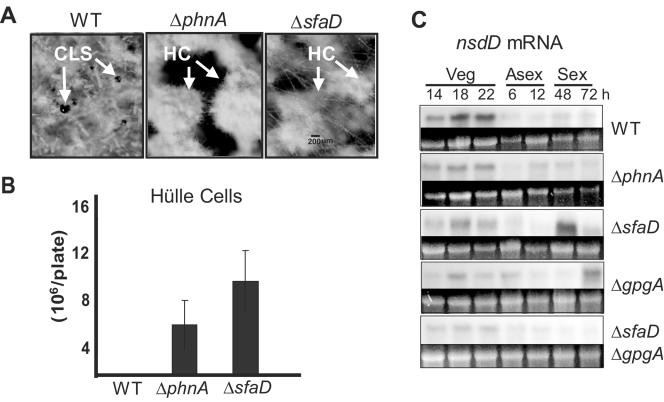FIG. 4.
Deletion of phnA resulted in impairment in sexual reproduction. (A) Close-up views (magnification, ∼×40) of wild-type (WT; RKH51.117) and ΔphnA (TJAP3) and ΔsfaD (RSRB1.15) mutant strains grown under sexually induced conditions for 10 days. While the WT abundantly produced both cleistothecia (CLS) and Hülle cells under self-fertilized conditions, the ΔphnA and ΔsfaD mutant strains did not form any cleistothecia yet exhibited an enhancement of aggregated Hülle cells (HC). (B) Numbers of Hülle cells were counted in 5-day-old cultures on solid MM under air-exposed conditions (averages of triplicate cultures/measurements with standard error bars). While the WT did not produce any Hülle cells under these conditions, the ΔphnA and ΔsfaD mutant strains (TJAP3 and RSRB1.15) formed large numbers of Hülle cells. (C) Northern blot analysis of nsdD in various mutants. No clear differences were observed in nsdD mRNA levels between the WT (RKH51.117) and the ΔphnA, ΔsfaD, ΔgpgA, and ΔsfaD ΔgpgA mutants. Equal loading of total RNAs was evaluated by ethidium bromide staining of rRNA.

